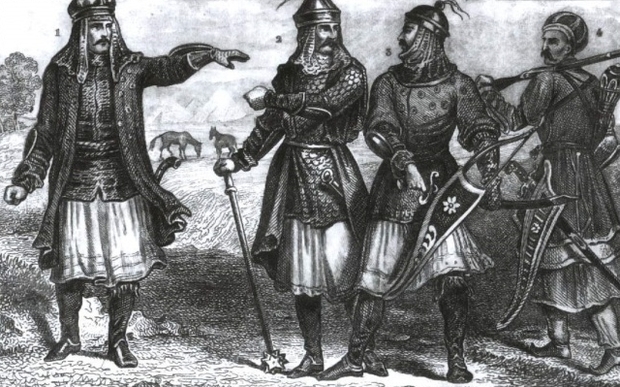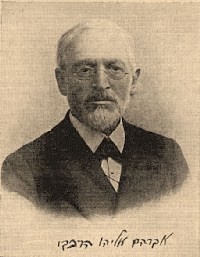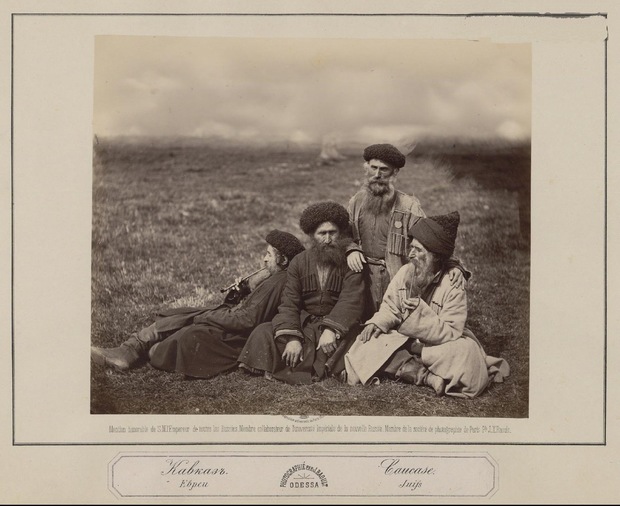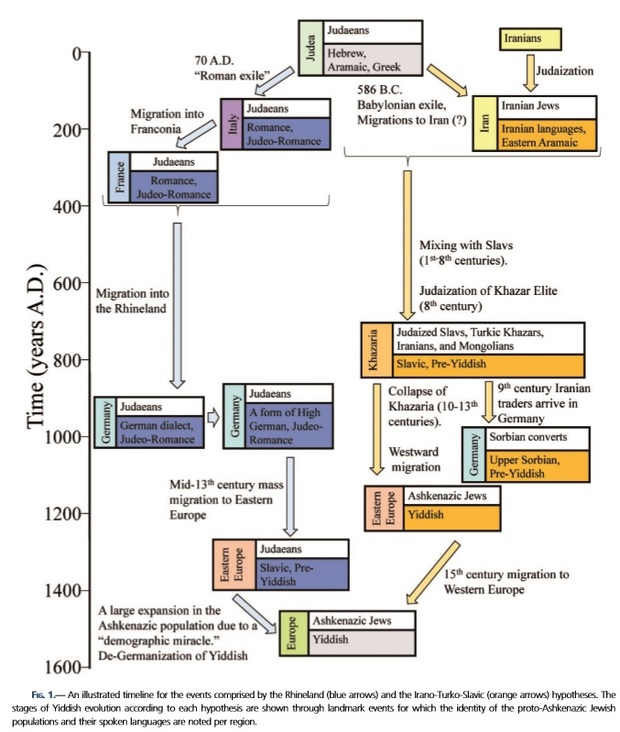Eran Elhaik: 'The Tatars have been proposed as some of the progenitors of Ashkenazic Jews'
Scientist Eran Elhaik from The University of Sheffield continues a series of publications about the origin of Ashkenazic Jews. Earlier the researcher told they are not descendants of Jews who resided in Germany but have Turkish roots.
Sensational news about the research that questioned the dominating opinion on the origin of Ashkenazic Jews spread among the mass media in the spring 2016. Eran Elhaik's article was published in a prestigious journal called Genome Biology and Evolution. It was criticised by both foreign and Russian geneticists and historians.
To find the primeval homeland of the Khazars with the help of GPS
Could you tell about your research, the methods you used and its importance?
My research deals with the study of human history through genetic tools. For that I design my own genetic tools that can capture the most interesting mutations in our genomes that can teach us about our past. I also build tools that can accurately tell us where the DNA came from. Our latest tool is the Geographic Population Structure (GPS) that can infer the geographical origins of a DNA, down to home village, in some cases.
This is important to study origin of individuals and populations. And it is also important for medical studies since our origin affect our wellbeing and drug response. Understanding where people come from will help us improve the effect of drugs, and this is what the field of personalized medicine deals with.
Why did you choose the origin of Ashkenazic Jews as a topic of your research?
Yiddish is one of the last European languages whose linguistic and geographical classifications remain unclear even after three centuries of research. Likewise, the origin of Ashkenazic Jews (AJs) remains under debate. The accuracy of GPS prompted us to apply it to the genome of sole Yiddish-speaking AJs that were never studied before as a defined group and multi-lingual AJs.

'Modern-day populations residing along the southern borders of the Khanate exhibited the highest similarity to AJs'
You say they have Turkic roots. What existing Turkic populations does their origin refer to?
GPS traced the AJs to Northeastern Turkey where we found four primeval villages whose names may derive from the word 'Ashkenaz'. We also found genetic proximity between AJs and Turks as well as populations from the region in support of a common Turkic-Iranian origin. When we simulated the DNA of neighbouring populations we found high similarity with the simulated signature of the Khazars resided in the southern Caucasus region.
Does Ashkenazic Jew's blood have blood of Russian Turkic populations?
If you mean DNA, then the answer is probably yes. Turkey and the Caucasus are highly diverse, many populations share certain common ancestries.
Could you tell us briefly who Ashkenazic Jews are? What is your version of their origin?
This is a difficult question. Our recent study suggests that the AJs genome experienced a major admixture event in 'ancient Ashkenaz' in Northeastern Turkey, however, it does not say where AJs came from before that. However, putting together genetic, historical, and linguistic evidence, we believe that AJ genomes may be conglomerates of Greco-Roman-Turko-Irano-Slavic and perhaps Judaean genomes who gravitated towards Ashkenaz due to the commercial opportunities available to them (Fig. 1).
What is Khazaria?
Khazaria is the name of the Khazar's state that survived between the 6th and 11th centuries and whose Elite and a certain percentage of the population converted to Judaism during the 8th century. Khazaria was founded on a major artery of commerce between northern Europe and southwestern Asia and was one of the foremost trading empires of the medieval world, commanding the western marches of the Silk Road and playing a key commercial role as a crossroad between China, the Middle East and Kievan Rus.
Did you study the genetics of other populations who used to live on the territory of the former Khazar Khanate?
Yes, I compared the genetic similarity of many populations to those of AJs. Modern-day populations residing along the southern borders of the Khanate exhibited the highest similarity to AJs.
'This is not Science, this is Harry Potter'
At the same time, according to your research, ancestors of Ashkenazic Jews used to live in Turkey, not the Volga region. Apart from the genetic proof, what indicates that Ashkenazic Jews come from Turkey and what proves that they are Slavic?
That is correct. We have historical and anthropological evidence that the origin of AJs is from Turkey.
 Harkavy wrote in 1867 that 'the first Jews who came to the southern regions of Russia did not originate in Ashkenaz [Germany], as many writers tend to believe, but from the Greek cities on the shores of the Black Sea and from Asia via the mountains of the Caucasus' (Harkavy 1867).
Harkavy wrote in 1867 that 'the first Jews who came to the southern regions of Russia did not originate in Ashkenaz [Germany], as many writers tend to believe, but from the Greek cities on the shores of the Black Sea and from Asia via the mountains of the Caucasus' (Harkavy 1867).
Our findings also support Rabinowitz's thesis that European Jewish communities often nested along continental trade routes, which determined their preferred residency. We also know that this area had a very large community of Greco-Roman and mixed Irano-Turko-Slavic populations who espoused Judaism in a variety of venues throughout the first millennium A.D. in 'Ashkenaz' lands centered between the Black and Caspian Seas (Baron 1937) who partially converted to Judaism. These communities were large enough to develop the first translations of the Hebrew Bible to Greek. Evidence that Yiddish originated from Slavic and that AJs embedded Slavs include linguistic evidence since Yiddish has a large number of Iranian and Turkish words with some Greek. AJs also adopted many Slavic customs like breaking a glass in wedding and putting rocks on tombstones.
What other theories of the origin of Ashkenazic Jews exist?
The alternative theory is the Rhineland hypothesis, which envisions two mass migratory waves that have absolutely no historical support (Fig. 1). They went from ancient Israel to Roman Empire first, then later from what is now Germany to Slavic lands where Jews reproduced via a miracle, which is necessary to explain the large presence of Jews in Eastern Europe, but this is not Science, this is Harry Potter.

'The alternative theory is the Rhineland hypothesis… They went from ancient Israel to Roman Empire first, then later from what is now Germany to Slavic lands where Jews reproduced via a miracle… but this is not Science, this is Harry Potter.' Photo: russian7.ru
Do you know about Russian/Kazan Tatars? Could they participate in the origin of Ashkenazic Jews?
I am well familiar with the history of the region. The Tatars have been proposed as some of the progenitors of AJs. I agree that there is some evidence of shared common origin between these populations.
Does Yiddish have traces of Turkish borrowings?
Prof. Wexler noted that Yiddish lacks typical Turkic linguistic features (e.g. vowel harmony), but there are a handful of Turko-Iranian lexical items and possibly a periphrastic construction for the integration of Hebrew/Hebroid masculine singular participles. The major clue in Biblical Hebrew and Assyrian that links many of the ancestors of the Yiddish speakers with the Turko-Iranian Caucasus is their name. For at least the last millennium, the North European Jews have used the Yiddish-Hebrew word aškenaz to denote 'medieval Jewish and non-Jewish inhabitants of the German-speaking lands', andaškenazi (plural aškenazim) 'a Jew of central and northern Europe and his/her descendants'. These terms are from the Biblical toponym /aškenaz/, found in Genesis 10: 3, I Chronicles 1: 6, and Jeremiah 51: 27, which has the congeners aškuza, ašguza, išguza in Assyrian inscriptions of the early 7th century B.C. In the Bible, this toponym denotes an Iranian people 'near Armenia', presumably the Scythians. Biblical Hebrew has an /n/ in the term erroneously, perhaps because the letters nun and vav looked similar.

Reference
Eran Elhaik — geneticist, faculty appointed Lecturer at the University of Sheffield, member of the Bioinformatics Hub and Insigneo.
- BSc (1999) Israel, Open University (double major in Computer Science and Business)
- PhD (2009) Texas, University of Houston
- Postdoctoral Research Fellow (2009-2011) Maryland, Johns Hopkins University, School of Medicine
- Postdoctoral Research Fellow (2011-2013) Maryland, Johns Hopkins University, School of Public Health
- Research Associate (2013-2013) Maryland, Johns Hopkins University, School of Public Health
- Lecturer (2014-present) University of Sheffield